Your 7-Step Guide To Building A B2B Content Marketing Strategy

We all know that before building an effective content marketing strategy, it’s crucial to understand what content marketing is and what it does. The Content Marketing Institute (CMI) defines content marketing as “a strategic marketing approach focused on creating and distributing valuable, relevant, and consistent content to attract and retain a clearly defined audience — and, ultimately, to drive profitable customer action.“
Rather than marketing products or services, it provides valuable and relevant content to your audiences and customers to help them with their B2B content needs. Put simply, adopting a problem-solving mindset can help produce content that allows brands to tell compelling stories, build connections with their customer base, and drive sales.
Whether in the form of articles, videos, infographics, or images, any such kind of editorial content constitutes a form of content marketing. Studies indicate that B2B content marketing generates 3x more leads than all traditional marketing forms while saving up to 62% of overall expenditure in the process.
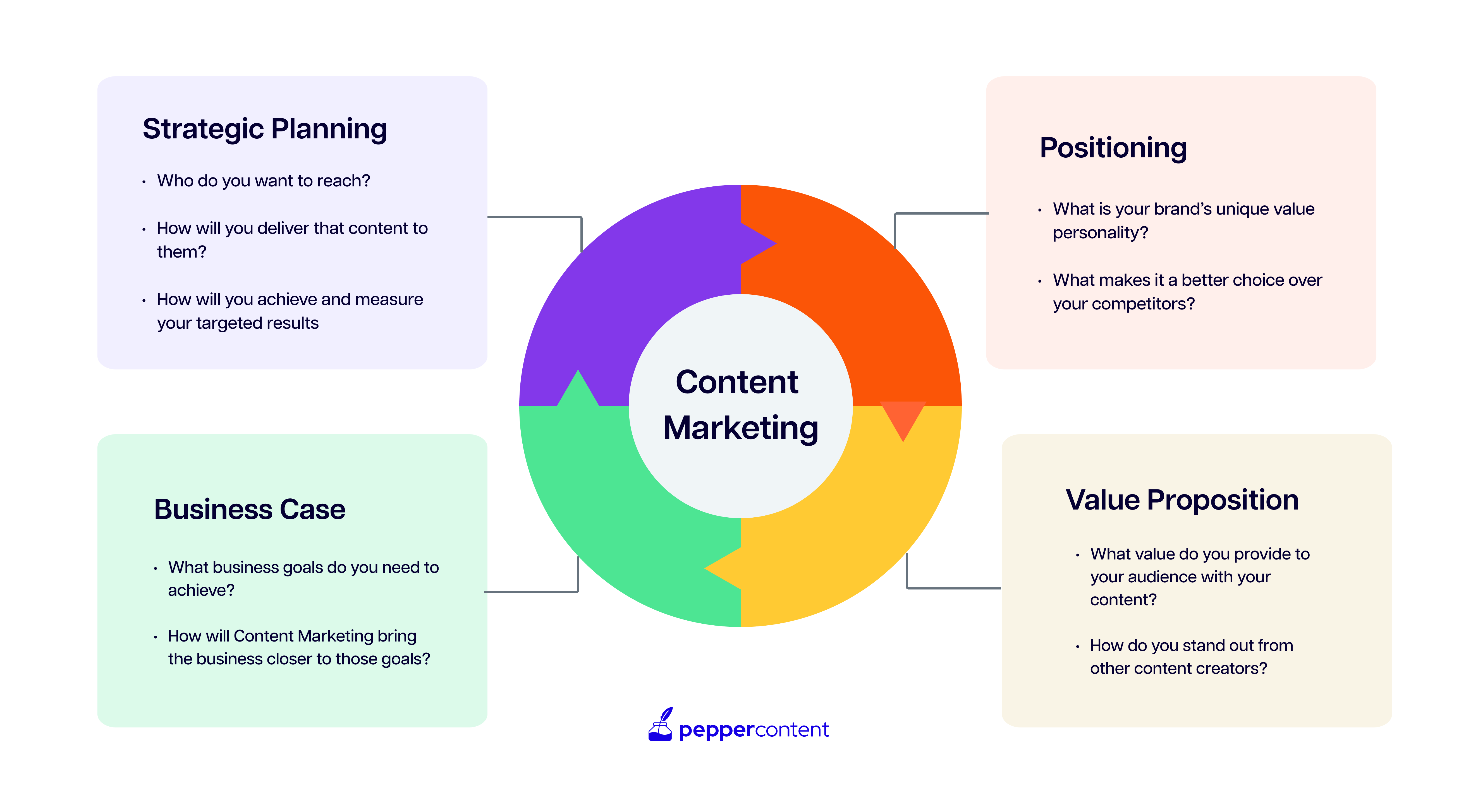
This suggests that a B2B content marketing strategy functions as the foundation or roadmap for your company. It steers you from one objective to the next, ensuring you stay focused on your goals. Without it, you risk facing confusion and straying from the path.
Regardless of the scale of your company’s marketing efforts, they hold little value if you don’t harness the power of the right content.
Let’s take the brilliant example of how Red Bull changed the face of their business — The company leveraged YouTube as a platform for its content campaigns. They focused on intense sports and activities, making engaging and top-notch videos that really resonated with their intended audience. By regularly posting thrilling videos of athletes pushing their boundaries, Red Bull didn’t just surprise viewers; they also solidified their brand identity as an embodiment of energy and adventure. This strategy resulted in millions of followers, viral videos, and brand loyalty.
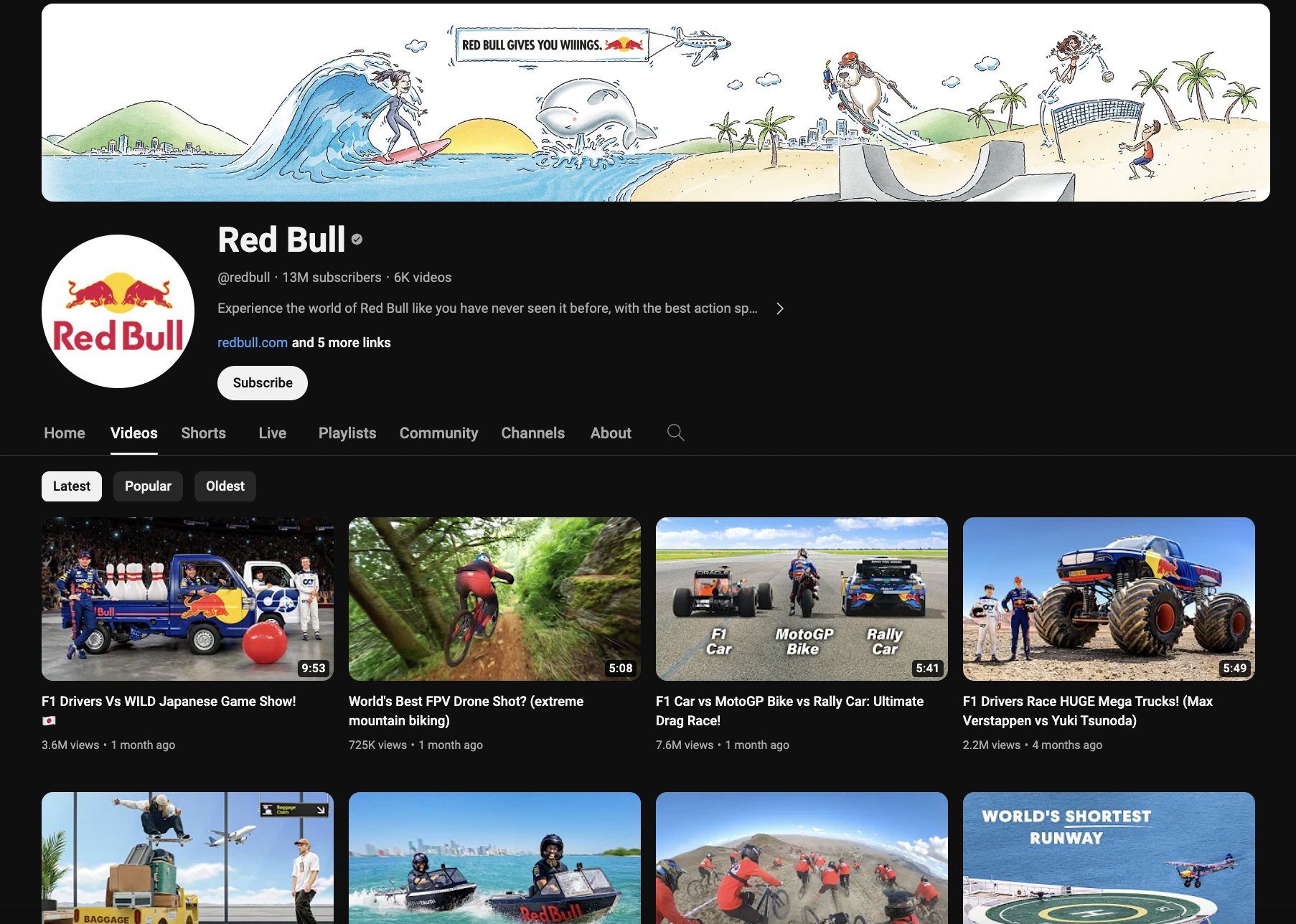
This provides a fantastic illustration of how B2B content marketing examples can also be applied to consumer-facing brands.
As a brand owner and a team player, always remember that content matters. It’s how you establish a positive brand image and enhance your visibility. According to the 2022 Demand Gen Report, 61% of B2B buyers read three to seven content pieces before trusting a brand.
That being said, let’s understand the significance of a well-defined content marketing strategy and how it can help brands achieve maximum ROI.
The Importance of a B2B Content Marketing Strategy
While 72% of businesses see content as a core business strategy, only about half of them actually manage to build a loyal group of followers, which is crucial for long-term customer relationships. This could be because only 41% of marketers have a clear, documented strategy in place.
The Content Marketing Institute (CMI) found that businesses with a clear, well-documented content strategy:
1. Are More likely to see themselves as very successful at their content marketing efforts.
For example, about 69% of companies with a well-documented content strategy believe they’re doing exceptionally well in content marketing. But you need to remember that having a plan isn’t enough. To be truly effective, you need to measure how well your content is doing. For example, 95% of the top marketers use data to measure the performance of their content. In comparison, 83% of them have set key performance indicators (KPIs), and 67% measure how much profit they’re making from their content marketing efforts.
2. Have less difficulty building long-term relationships with their customers.
Businesses with a solid B2B content marketing strategy find it easier to make content that fits every step of the customer’s journey. They focus more on what their customers need than just trying to deliver a sales pitch.
3. Are willing to spend more money on content marketing.
The best B2B marketers allocate 1.5x more money for content marketing than the average B2B marketer. This means they see the value in investing more in their content.
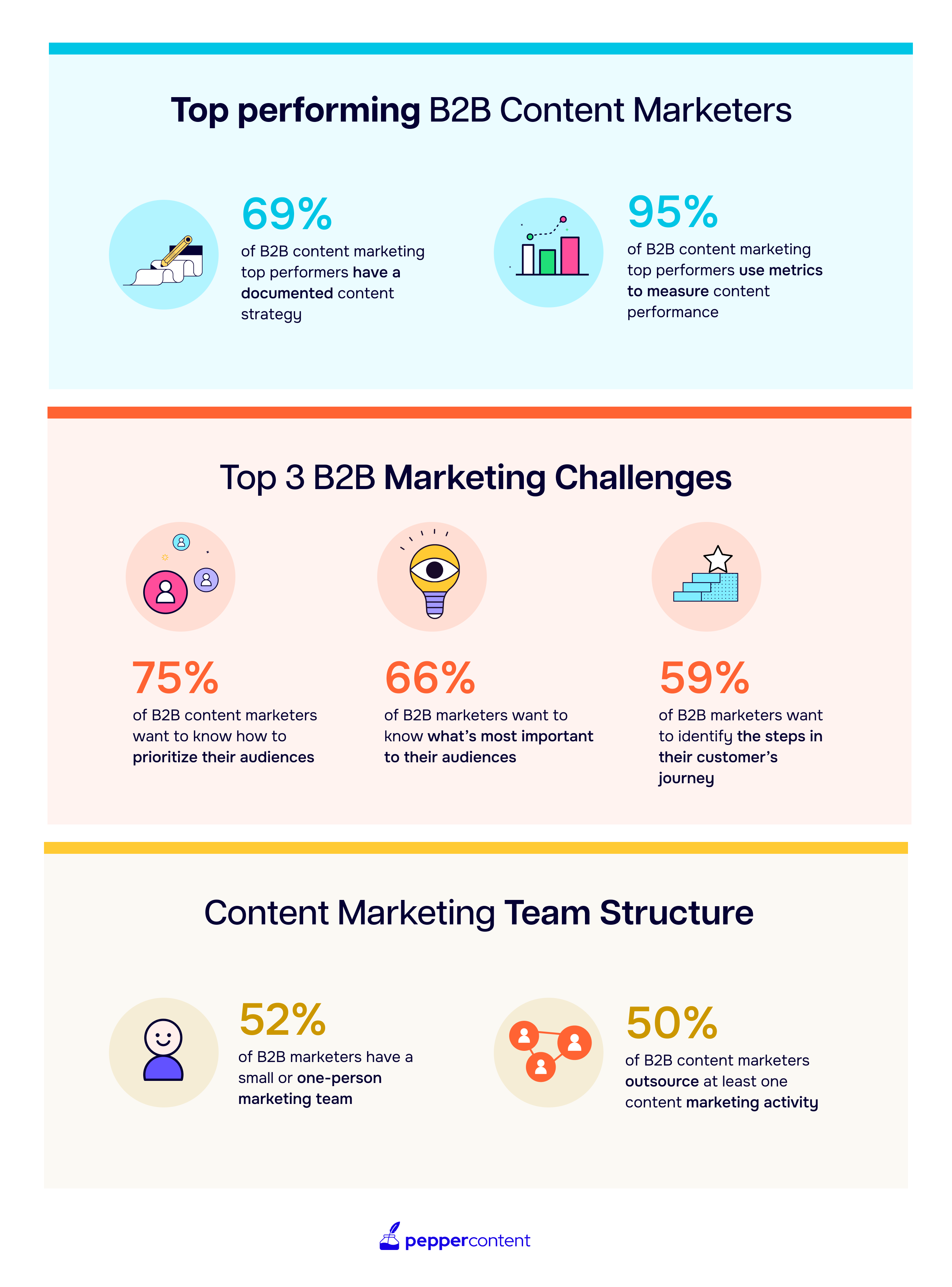
How to Build a B2B Content Marketing Strategy in 7 Steps
It’s important to remember that there’s no “one-size-fits-all” content marketing strategy for all B2B companies. Every business has its own story, so your marketing plan should be designed to suit your content needs.
It’s a good idea to begin by setting clear goals. Knowing where you want to end up in the long run is also essential. It might seem a bit overwhelming, but it becomes much simpler once you know the first steps.

Having said that, we’ve got a helpful B2B content marketing strategy checklist to guide you along the way!
Step 1: Understand Your Audience
When you’re planning to market to other businesses (B2B), the first thing to do is figure out precisely who you want to reach. This means understanding the types of companies or industries you want to connect with through marketing.
Researching your target audience helps you determine what content will grab their attention and potentially boost overall sales. If your published content doesn’t resonate with your target audience, it can slow down your sales funnel.
Here’s what you need to know about your audience:
What they’re looking for and what interests them.
- The problems they’re facing and what solutions they’re after.
- The online forums and communities they are most likely to be active in.
The big question is, how do you figure out all this information about your target audience? Here are some handy tips:
Create buyer personas – These are detailed profiles of your ideal customers.
- Establish audience segmentation based on different factors, like their purchasing behavior, historical purchases, demographics, interests, etc.
- Determine if you should focus on all these segments or if some are more important.
- Customize and personalize your content to match what your audience wants.
While creating your buyer persona, here are some of the things you need to consider:
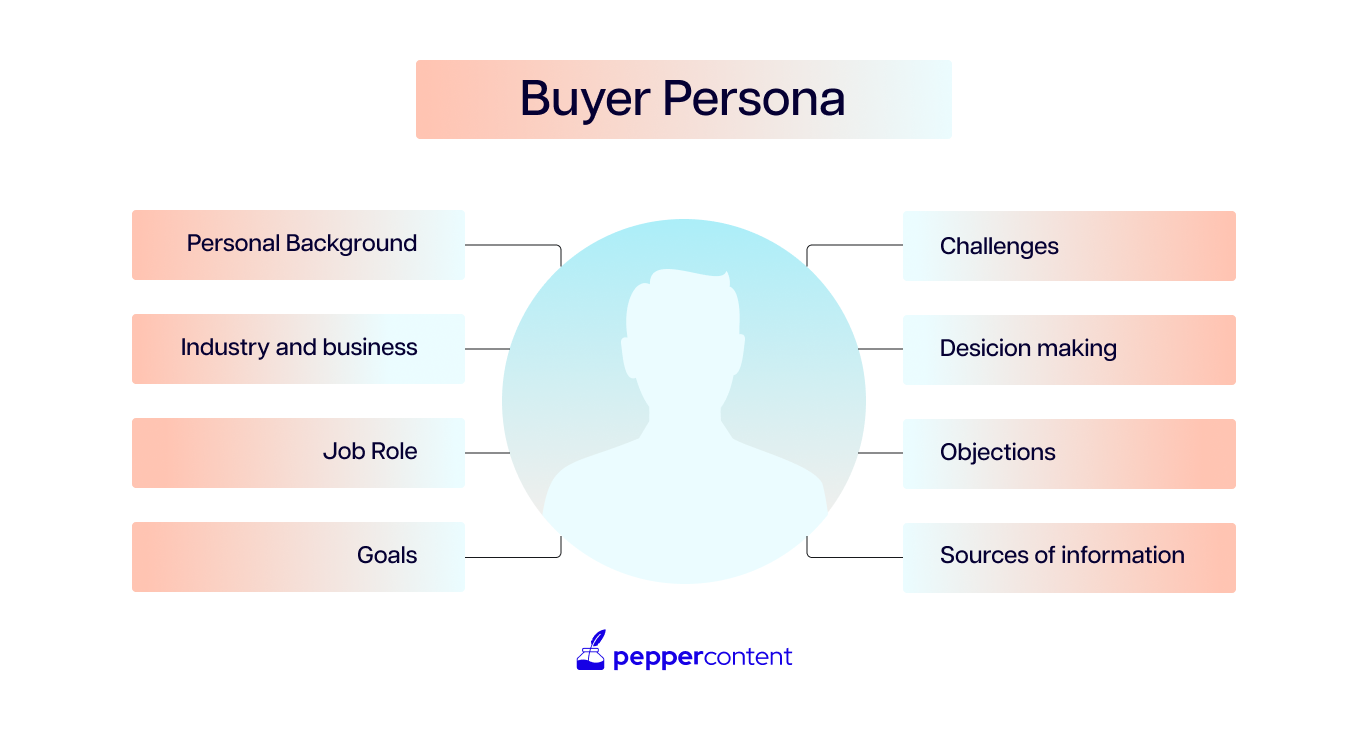
Once you’ve got a good grip on your audience and what they’re after, you can create a content marketing plan that meets their business needs.
Step 2: Define Your Goals
Now, let’s talk about the “what” in your B2B content marketing strategy.
First things first, what’s your main goal? You’ve got to be clear about what you want to achieve right from the beginning. It could be about expanding your brand reach, becoming a go-to source for expertise (thought leadership), increasing customer engagement, finding potential customers, sales, conversions, etc.
These are some of the main things you might be aiming for. But here’s the trick: every goal you pick should be a mix of ambitious but also something you can realistically pull off.
So, how do you find that balance? Well, that’s where the good old S.M.A.R.T. goal-setting technique comes into the picture:
Specific: Your tasks should line up with your goal. For example, if you want to boost your website visits by 10%, plan to publish blogs more often, like going from 2 to 3 a week.
- Measurable: Make sure you can measure your goals. If you aim to get more leads, put a number on it. Say, “I want to increase leads by 10%”.
Attainable: It’s not a guessing game. Look at what’s worked for you before and build on it. For instance, if posting on social media boosted your website visits, do more of it.
Relevant: Is your B2B content marketing strategy in alignment with your business objectives? Don’t dedicate time to things that won’t get you where you want to go.
Time-bound: Set deadlines for hitting your targets. This keeps you on track and focused.
Step 3: Content Audit
Before diving headfirst into your content marketing strategy, there’s a crucial but sometimes overlooked step you should take — conducting a content audit. This means closely examining all the content you’ve already published.
You might wonder, why bother with the stuff that’s already done? Well, auditing your current content helps you:
Figure out what’s working and what your target audience likes.
Identify what’s not working so you can avoid it in the future.
Identify gaps in the types of B2B content you create and the topics you cover.
Make sure you’re not accidentally repeating the same content on your site.
Now, you could spend some time browsing through your website, reading content, and forming opinions. But a casual look won’t give you the complete picture. To understand how good your content is, you must evaluate each page using a set of standard measures. This way, you’ll get a clear view of what’s happening.
Step 4: Content Creation
Now, let’s talk about developing a plan for the content you will create. It’s essential to consider what kind of content will suit your audience, your goals, and what you learned from your content audit.
In this content plan, you should also have a calendar that shows when and where each piece of content will go out. Your content plan should have a mix of different types of content, like:
Blog posts
Real-life examples
Detailed reports
E-books
Easy-to-read graphics
Videos
Online seminars
Once you’ve got this detailed content plan, you’re on track to create top-notch content that grabs your audience’s attention and boosts your business. However, you need to make sure that your content:
Solves a specific business problem
Gives insights into the latest industry trends
- Shows that you’re a leader in your industry, i.e., thought leadership
- Offers practical tips and advice
Step 5: Content Distribution
Getting your content to the target audience is crucial. To do this, you’ll want to share your content through different channels, including leveraging social media, sending out emails, running ads, and getting your content in industry publications.
When you’re working on content distribution, you need to consider your target audience’s preferences and online behaviors. Here are some tips that can help with content distribution:
Post on social media platforms that your audience uses.
Send emails when your audience is most likely to check them.
- Use ads to reach a bigger audience.
Submit guest posts to industry publications, online magazines, and websites to reach a more targeted audience.
By tailoring how you share your content, you’re more likely to connect with the people you want to reach.
Step 6: Metrics and Analytics
Once your plan is in action, it’s crucial to see if your B2B content marketing strategy is paying off. Did you hit those S.M.A.R.T goals you set earlier? To find out, you’ll need to watch how your content is doing.
Remember those key performance indicators (KPIs) you set at the start? These will show you if you’re on the right track and involve monitoring metrics such as:
Website Traffic
Lead Generation
Social Media Engagement
Conversion Rates
As you go along, you can see which content works best and where you might need to make some changes. You can do this check every few weeks or a month to stay on top of your progress.
Step 7: Iterate and Improve
If things don’t turn out as expected, you’ll need to return to your drawing board. Moreover, look for expert advice on how to get more leads for B2Bs, read blogs about boosting website visits, and check if your B2B content marketing strategy aligns with your business goals.
This is how you tweak your content plan to cater to your target audience’s needs and reach your goals.
What’s Next?
Crafting a B2B content marketing strategy might be intimidating as it involves input from everyone in your company. But don’t worry; take it step by step, and soon enough, you’ll have a solid plan. By following these steps and focusing on the end goal, your business will be on the path to content marketing success.
Need expert help in content creation? From understanding your target audience to crafting content tailored to your business needs, Pepper Content is here to assist you with all. Book a demo to learn more!
Latest Blogs
Learn how to rank on AI search engines like ChatGPT, Perplexity, and Gemini by optimizing your content for authority, structure, and relevance. Stay ahead in AI-driven search with this strategic guide.
Explore the best healthcare SEO services for your medical practice. Improve online visibility and effectively reach more patients in need of your services.
Discover top social media agencies specializing in banking solutions, enhancing financial services and driving engagement.
Get your hands on the latest news!
Similar Posts

Content Strategy
5 mins read
Choosing The Best Healthcare Marketing Agency For Effective Content Solutions
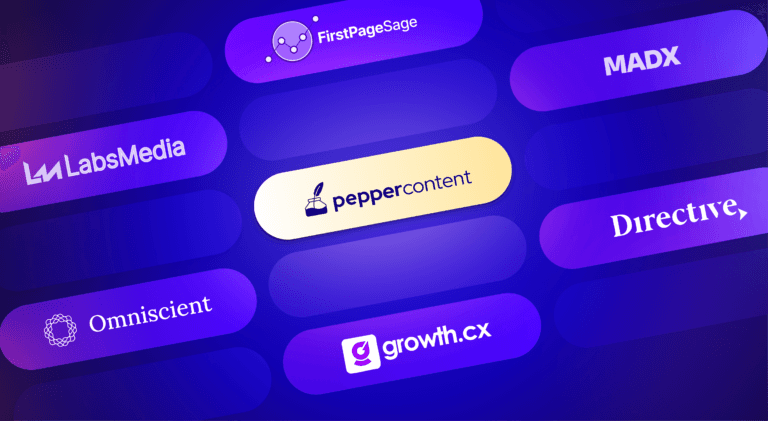
Content Marketing
4 mins read
Top 10 Agencies B2B SaaS Content Marketing for B2B Success

B2C Marketing
5 mins read